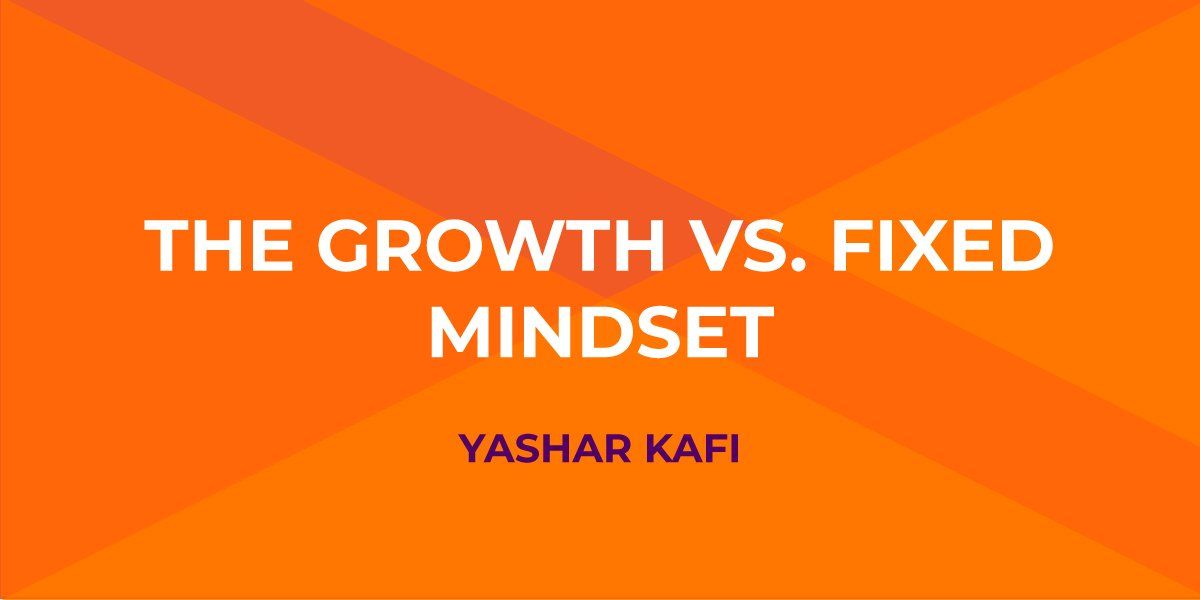The Growth vs. Fixed Mindset
Did you know that as human beings, we have two distinct mindsets? The growth and the fixed mindset. It might be luck, as to which one you’re born with, but it can determine the trajectory of your life, and define your character—whether you’ll be the person who stands tall in the face of adversity or the one who will shrink back into the corner when times get tough. The fixed mindset is the belief that your abilities were decided at birth, while the growth mindset is the belief that you can better yourself, your skills, and your qualities through dedication and perseverance. These beliefs brought to mainstream attention by Standford University psychologist, Carol Dweck, permeate every part of life. Your mindset, as well as your colleagues and bosses, can have a huge impact on your workplace experience. Let’s talk about it.
What is a Mindset?
A mindset is easily defined. It’s a set of traits attributed to the way we think: the assumptions, ideas, and methods that we individually or collectively hold. Mindsets are the standard rules and conventions that we live by—there are many around us. You see them in your daily life, with certain colleagues being pro-authoritarian workplace regimes. In contrast, others are desperate to be free of their traditional desk shackles, dreaming of a boss who will let them work remotely, from home or anywhere in the world.
The Fixed Mindset: Get to Work, Peasant!
A hugely affected area of the growth vs. fixed mindset is the workplace, where, for most of us, we spend approximately half of our day. Chances are, you’ll have experienced these two categories a lot over the years. A lot of old-school, traditional organizations are notoriously fixed in their mindset, with strict, stringent rules that support a hierarchical structure. It’s the kind of place where a CEO or manager believes him or herself superior to the inferior wider workforce. People with a fixed mindset thrive in traditional workplaces because they allow them to stamp their authority on others, reaffirming their status as powerful.
The Growth Mindset
The growth mindset is the polar opposite: individuals and groups have the belief that most things are completely fluid and variable, without limitations. If you’re lucky, you’ll have experienced this mindset in the workplace already, where bosses tend to inspire their employees to think outside the box, endorsing the use of intelligence to innovate new ideas. The growth mindset is less stringent and is seen quite regularly in the tech and creative design sectors. Management rolls up their sleeves and gets involved with their employees, creating a safe space for people to improve and strengthen their abilities with fewer limits and more guidance. Development is at the forefront of dynamic, growth-minded organizations. Learning opportunities are everywhere for employees, lifting the barriers that the fixed-mindset workplaces position in front of people, to help them to achieve their full potential.
Innovation Across The Nation
More organizations are looking or being forced to adopt a new, agile, dynamic way of operating. The growth-focused mindset is becoming a necessity to compete with rivals, and it ensures that the flaws in the traditional, fixed-mindset are shoved into the spotlight. In a world where innovative culture is becoming the norm within the workplace, a fixed mindset is the killer of creativity, leaving no space for experimentation and imagination. The fixed mindset categorizes individuals, making them believe that they exist in their role because of the skills that they already possess, rather than encouraging them to recognize the power of continuous development and learning. So if you run a business and you’re of a fixed mindset, consider that your inability to accept failure—and your unwillingness to help staff overcome it—is detrimental to your employees. Transitioning to the growth mindset changes your workplace and helps your employees recognize the importance of lifelong learning, with the guarantee of advancement and career development.




